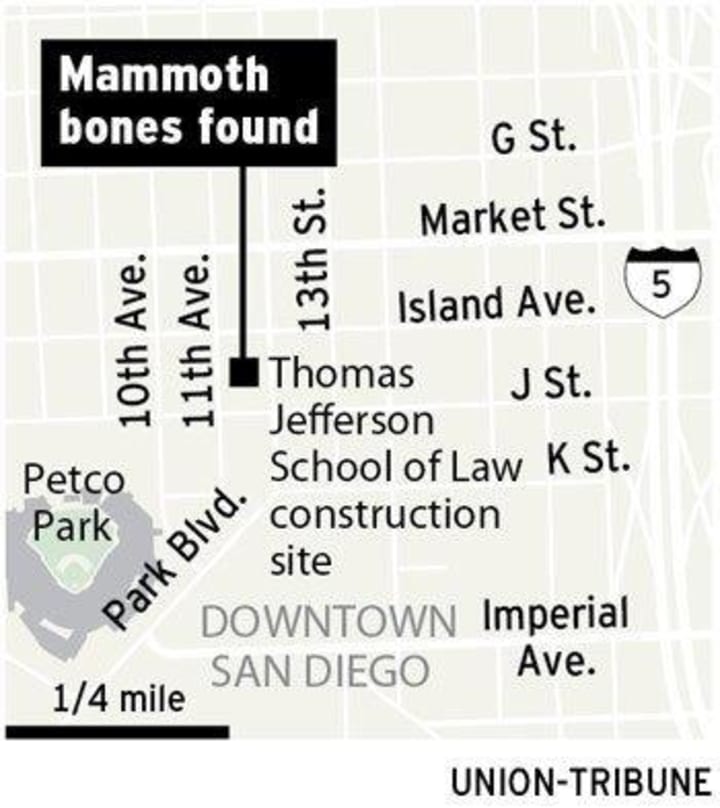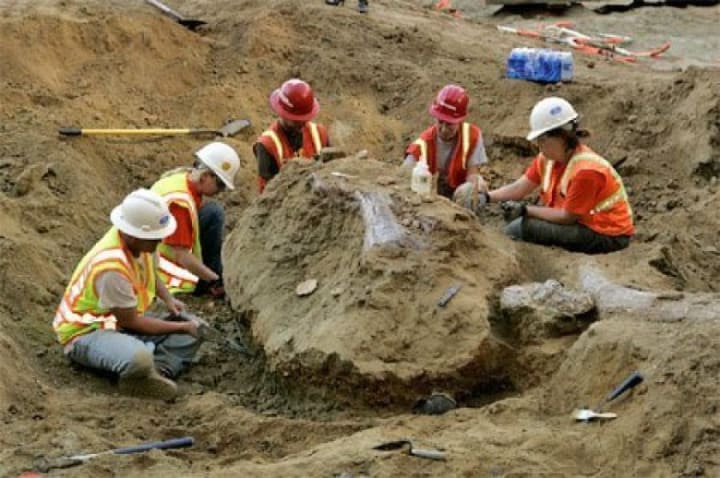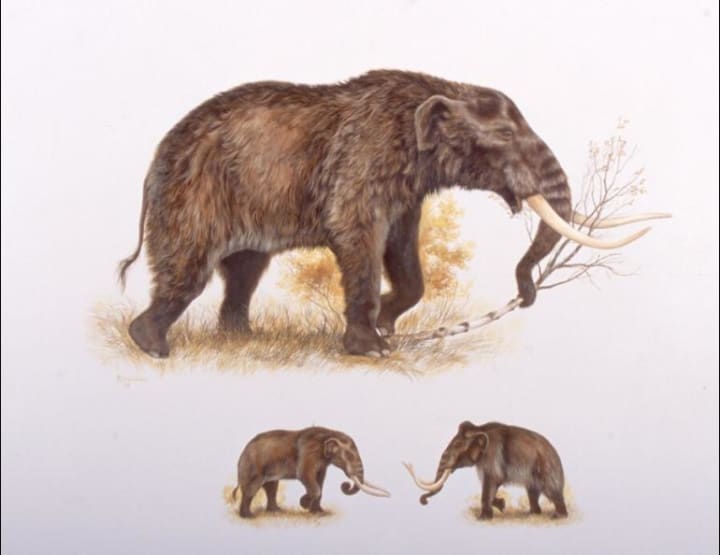Unknown World
The Remains Of A Mammoth and Mastodon

Ahh, San Diego has great weather, palm trees, tasty Mexican cuisine, and baby mammoths and mastodons. You read that right, I've lived in San Diego, CA, all of my life, and I've never heard of a baby mammoth discovered until 2009; while I was watching the news, the Colombian baby remains mammoth were found in Downtown San Diego. The 8-foot tusk, skull, and bones were found at a construction site. During that time, they were building the Thomas Jefferson School of Law; as the construction workers were digging, they saw skulls and bones. They reached out to the San Diego Natural History Museum immediately. I watched this news clip in awe because I didn't expect the remains of an extinct animal to exist still. The first mammoth was discovered in January 1987 at Anza-Borrego Desert State Park located in Borrego Springs.


Quick Facts About Colombian Mammoth's

- It is an extinct species inhabited in North America as far north as the northern United States and as far south as Costa Rica.
- Reaching 4 m (13 ft.) at the shoulders.
- Weigh approximately (22,000 lbs.)
- Considered one of the largest species of mammoth
Like the mammoth in August 2017, a Mastodon means "nipple tooth" because the grooves in their [teeth] reminded some 18th Century paleontologists of human breasts. The Mastodon bones were found on state route 54 near the San Diego freeway. It must be fun being a construction worker; they seem to be the lucky ones discovering these fascinating creatures. Growing up, I had a short-lived dream of being a Zooarchaeology; studies remain of animals from archaeological sites and archaeology, a person who studies human history and prehistory through the excavation of sites analysis of artifacts and other physical remains. I get excited when I read news articles or see YouTube videos on the many hidden gems of this great city of San Diego.
Quick Facts About Mastodon

- Mastodons lived in herds.
- Diet obtained by browsing and grazing
- The largest male specimens, the 35-year-old AMNH 9950, was 2.89 m (9.5 ft) tall and weighed 7.8 tons (7.7 long tons; 8.6 short tons),
- Another was 3.25 m (10.7 ft) tall and weighed 11 tons (11 long tons; 12 short tons
What's the Difference Between Mammoths and Mastodons?

Although both make look the same, they are very much different. Mastodons are shorter and stockier than mammoths. They also displayed shorter tusks, and according to dental discoveries, their molars are cone-like to eat through woody browsers. Mammoths have curved tusks, and Mastodons have straighter tusks. Fun Fact: Thomas Jefferson admired Mastodons so much that he stored some bones in the white house during his presidency.
Mammoths, belonging to the genus Mammuthus, arose about 5.1 million years ago in Africa, according to Ross MacPhee, Ph.D. Mammoths went extinct about 10,000 years ago, though scientists believe an isolated population of dwarf mammoths persisted on Wrangel Island off the northeastern coast of Siberia until about 3,700 years ago- From Live Science.
Colder climate and habitat loss towards the end of the ice age, where temperatures changed and the atmosphere heating up towards the end, are reasons for extinction.
It's hard to fathom the type of wildlife that roamed the earth before highways, storefronts, houses, and apartments. To preserve the planet, we must study its history to do everything we can to keep the left's vegetation.
With the pandemic, a lot of our natural history museums are introducing virtual visits. Here are two examples of the exhibits of Mammoths and Mastodons that you'll see:
National Museum of Emerging Science and Innovation- Located in Museum in Tokyo, Japan
Museum on the Move: Tracking the Mastodons- University of Michigan College of Literature, Science, and the Arts
Well, there you have it impress your friends with these fun facts.
Resources
********************
Click here to read more of my stories. I only profit off this website through reads and tips, so your curiosity is much appreciated.
If you are looking for a group of writers who supports, provides feedback, reads, like, and provide tips, then join Vocal Creators Saloon. A small community with tons of advice and writing prompts will help you through your writer's journey.






Comments
There are no comments for this story
Be the first to respond and start the conversation.